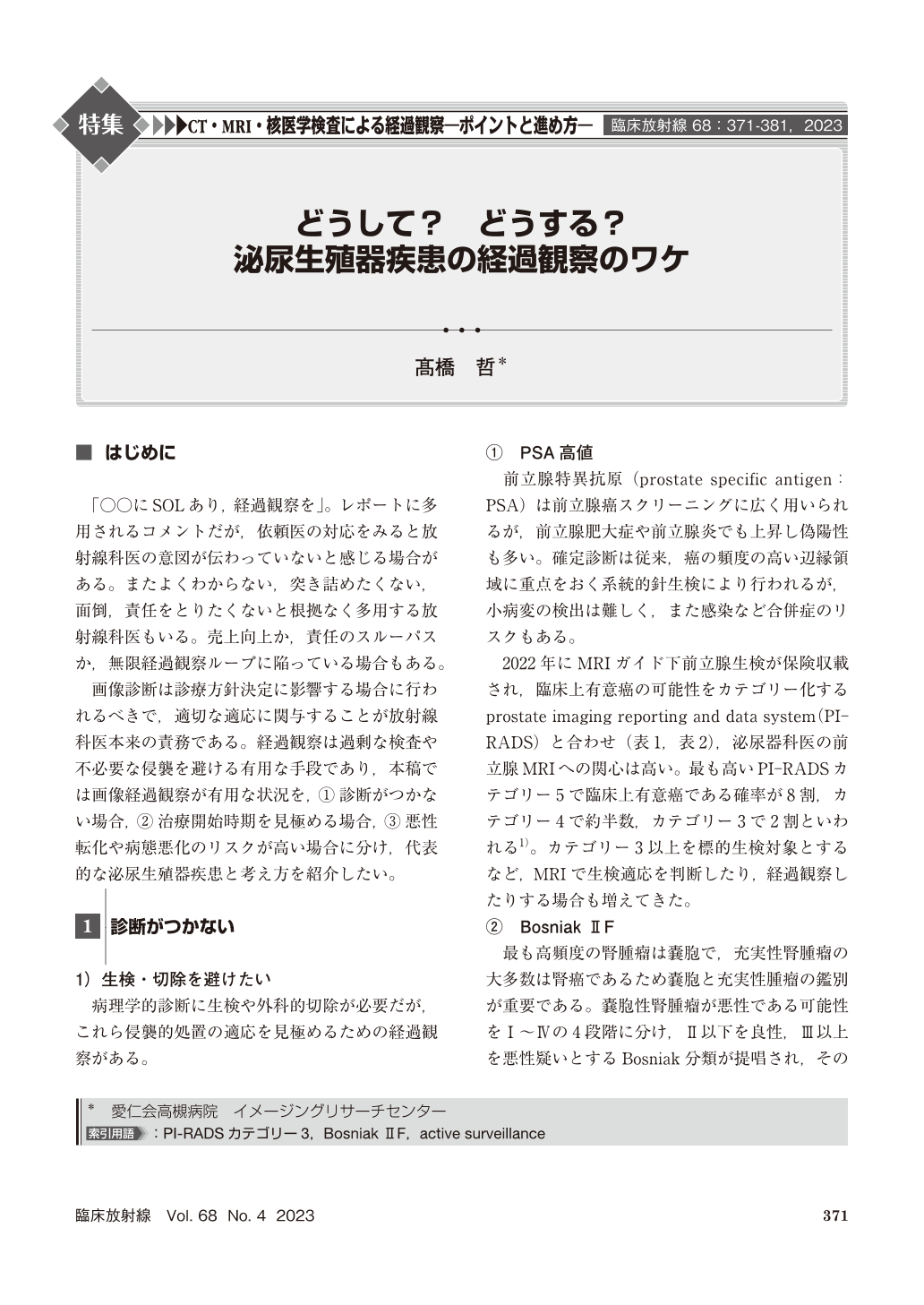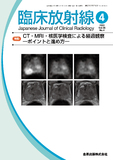Japanese
English
- 有料閲覧
- Abstract 文献概要
- 1ページ目 Look Inside
- 参考文献 Reference
「○○にSOLあり,経過観察を」。レポートに多用されるコメントだが,依頼医の対応をみると放射線科医の意図が伝わっていないと感じる場合がある。またよくわからない,突き詰めたくない,面倒,責任をとりたくないと根拠なく多用する放射線科医もいる。売上向上か,責任のスルーパスか,無限経過観察ループに陥っている場合もある。
Although we frequently recommend and undergo follow-up imaging studies in daily clinical practices, their application, frequency, or timing is insufficiently considered. Imaging studies should be performed, when they can influence the decision of treatment strategy. Therefore, we diagnostic radiologists are expected to recommend appropriate examinations at appropriate timing, as follow-up study might reduce unnecessary examinations or invasive procedures. In this review, we have discussed several clinical scenarios that follow-up imaging study would be useful in urogenital disorders.
1.Cannot make final diagnosis:
(a)to avoid invasive biopsy or surgery;such as the patients with elevated PSA, renal cystic mass, and those who underwent intavesical BCG therapy with prostatic lesion.
(b)suboptimal imaging study;due to contraindication for contrast-enhanced study, CT, or MRI, as well as severe artifacts due to patients’ conditions.
(c)inconsistency between clinical data and imaging;such as false positives or negative of PSA or multi-parametric prostate MRI, or fail to meet diagnostic criteria.
2.Active surveillance:
To avoid unnecessary treatment and its potential side effects, closely monitor potentially indolent cancer;such as clinically insignificant prostate cancer, or small renal tumor.
3.Early detection of recurrence or malignant transformation.

Copyright © 2023, KANEHARA SHUPPAN Co.LTD. All rights reserved.


